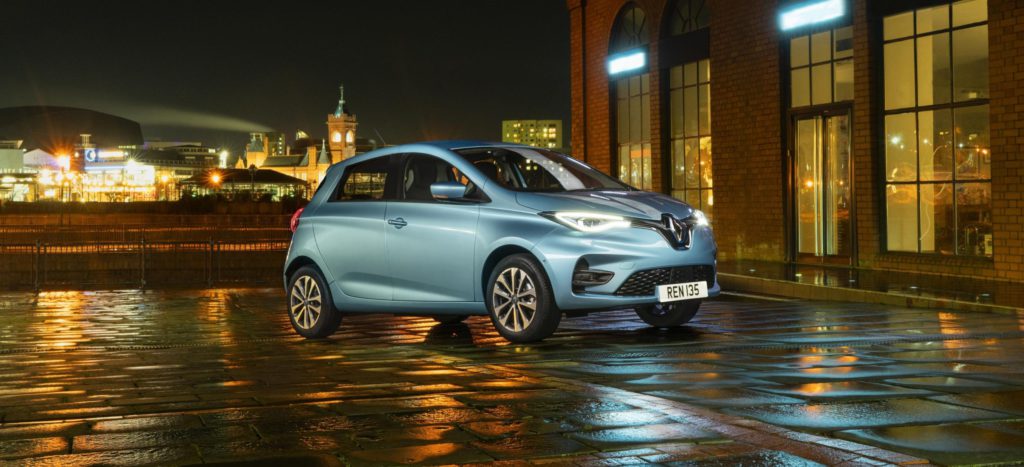Sales successes for EVs on emergence from lockdown
27 July 2020

27 July 2020
Signs of a coronavirus (COVID-19) recovery are starting to appear. While new-car registrations in the EU fell by 22% year-on-year in June, this was a marked improvement on the significant declines recorded in March (55%), April (76%), and May (52%). On this road to recovery, there does look to be a front-runner, electric vehicles (EVs).
Clear examples of an electrified COVID-19 comeback are emerging. Renault Group reported a 34.9% fall in unit sales globally in the first half of 2020 but also experienced a great deal of demand for its electric line-up. Meanwhile, Volkswagen Grop (VW) has been pushing hard for efficiency and sustainability as part of its ′Together 2025+‘ strategy. Its large investments look to be paying off as orders soar for its fully-electric ID.3.
300,000 milestone
Renault is celebrating over 300,000 EV sales across Europe, since launching its first electric model in 2010. Its Z.E. range consists of five different vehicles, including the new Zoe and its van counterpart. Sales of the Zoe increased by almost 50% in the first half of 2020, compared with the same period last year, to 37,540.
More than 1,000 units of this updated EV were purchased by vehicle subscription service Onto, which now has 1,300 models available to customers. Meanwhile, Leeds City Council in the UK recently took delivery of over 120 Kangoo Z.Es. These will be used for a range of council services, as well as being made available to local businesses as part of an EV trial scheme.
The third generation of the Zoe arrived in early 2020 and features a 100kW R135 electric motor and a 52kWh battery, providing over 390 kilometres of range, according to the World Harmonised Light-Vehicle Test Procdure (WLTP). A 50kW DC charging option will re-charge the battery from zero to 80% in an hour and 10 minutes.
CMF-EV platform
The French carmaker also confirmed it made a ′significant’ reduction in development costs by working with its alliance partner Nissan on the new Common Module Family Electric-Vehicle (CMF-EV) platform.
′We have achieved a 30% reduction on the platform cost, we have reduced the battery cost by 30% and the e-motor by 20%,’ Jean-Paul Drai, Renault Group’s product development director for EVs, said during an Automotive News Europe Congress conversation.
The modular platform’s length is adaptable, so the battery can be tailored to the vehicle type and the desired range. The CMF-EV also allows for the installation of batteries of different heights, and can therefore be used to develop both low saloons and SUVs.
Renault’s Morphoz offers an insight into how this modular technology can be utilised, as the concept car can change its power, capacity and range thanks to its expandable wheelbase. In city mode, the EV is 4.4-metres long with a 40kWh battery, providing an approximate range of 400 kilometres. In travel mode, the front of the car extends, adding an additional 0.4-meters in length and room for an additional 50kWh battery pack, taking the range up to 700 kilometres.
ID.3 draws a crowd
Meanwhile, VW’s ID.3 has attracted tens of thousands of pre-orders. It looks as though the surge is in part thanks to a large amount of interest from younger customers new to the brand, according to a report by the Financial Times (FT).
Some 85% of the 37,000 customers who paid to reserve one of the battery electric-vehicles (BEVs) had not bought a VW before. Meanwhile, 85% of sales of the Golf hatchback were to repeat customers. ′The ID.3 is igniting with a population that is about 10 years younger than the average profile (of our customers), which is around 58 in Europe,’ JÜrgen Stackmann, VW brand’s sales boss told the FT.
He went on to state that despite production delays, deliveries are on track for between 60,000 and 70,000 new EVs in 2020, as well as the production of 100,000 units of the ID.3 and ID.4. A total of 150 of the German carmaker’s employees began testing the model for everyday usability in June, ahead of plans to begin delivery of 30,000 ID.3s in September.
The ID.3 did face software issues, which reportedly delayed deliveries. Moving forward, VW will rely on its Car.Software organisation, which began operating in 2019. To meet VW’s ambitious electrification targets, the unit will grow from 3,000 staff members to 5,000 by the end of 2020.
OEM’s are investing heavily in electrification. From modular platforms like Renault’s CMF-EV or VW’s MEB, to expanding software teams and growing model line-ups, these signs of increasing demand are sure to buoy their efforts.